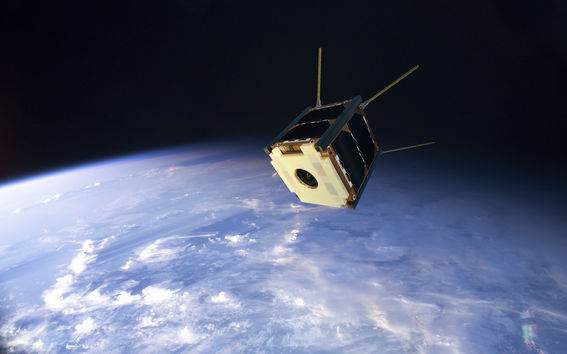A year long wait is over - the Suomi 100 satellite was launched into space

Celebrating 100 years of Finland’s independence, the Suomi 100 satellite has been ready for launch for over a year and now its wait is finally over. SpaceX's Falcon 9 rocket was launched from California on 3rd December, at 20.32 Finnish time, and on board was the Suomi 100 and 63 other small satellites.
‘I am really glad that at last our satellite has started its journey,’ says Professor Esa Kallio, who has been leading the project at Aalto University.
‘In space projects delays are typical. However, the wait has been worth it as hopefully soon we can conduct research with the satellite and take pictures of the nearly 101-year old Finland.
The Suomi 100 satellite will orbit the Earth at an altitude of approximately 575 kilometres, and its trajectory takes it above the polar regions on each round. Therefore the satellite will often travel over Finland and enables it to make good observations. This also makes it possible for the Aalto University earth station in the Otaniemi campus to be in direct contact with the satellite.
The satellite has special radio instrument, which allows scientists to make observations about the structure and contents of the ionosphere, a region in space around the Earth full of charged particles. The radio instrument will also help the scientists study so-called space weather, which causes geomagnetic activity and auroral displays.
With the help of a camera the satellite can take pictures of Aurora Borealis and Finland. In addition, the satellite is used to test a new 3D-printed plastic part developed at Aalto University that is resistant to space conditions and can in the future help make satellites lighter and cheaper.
Rocket problems delayed the launch
The Suomi 100 satellite was supposed to be sent to space more than a year ago. The satellite had been ready for departure at that time and was due to be launched on the Indian PSLV rocket, but the launch had to be postponed due to an accident.
After the accident, PSLV flights were suspended for a long time and after resuming operations there have been long delays. Therefore, it was decided that the launch of the Suomi 100 satellite was to be moved to the US based SpaceX Falcon 9 rocket.
The launch planned for mid-November had to be moved several times due to rocket inspections and bad weather.
The Suomi 100 satellite is Aalto University’s third satellite. Aalto University's partner in the satellite project is the Finnish Meteorological Institute, which participated in the production of the satellite’s computer software and instruments and is also involved in a scientific research. The project was also funded by Finland's 100th anniversary project
More information:
Professor Esa Kallio
Tel. +358 50 420 5857
esa.kallio@aalto.fi
Read more news

Study: Internal combustion engine can achieve zero-emission combustion and double efficiency
A new combustion concept that utilizes argon could completely eliminate nitrogen oxide emissions from internal combustion engines and double their efficiency compared to diesel engines.
A new way to measure contagion: the gut bacterium behind blood poisoning can spread like influenza
Neither the antibiotic-resistant nor the highly virulent strains are the most transmissible.






